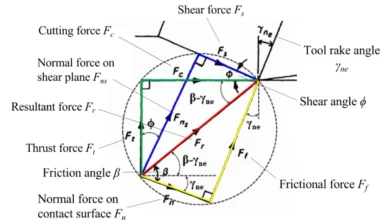Exploring the Concept of Tiny Zones: A New Era in Design and Urban Development

In the modern world of design and urban planning, a relatively new and innovative concept Tiny Zones is gaining traction—Tiny Zones. These small-scale, yet highly efficient spaces are transforming the way we think about living, working, and interacting in our cities. Tiny Zones are designed to optimize small spaces, using creativity and functionality to make the most of limited areas. This emerging trend has sparked conversations across industries, from real estate and interior design to urban development and sustainability.
At the heart of the it movement is the desire to create more with less, maximizing the potential of small spaces for a variety of uses. Whether it’s for living quarters, office spaces, or recreational areas, Tiny Zones offers a solution to the growing need for efficient use of space, especially in urban environments where land is becoming increasingly scarce.
In this article, we will explore the many facets of it, from their origins to their application in different areas, and how they are reshaping our cities and our daily lives. With an expert eye, we’ll dive into the benefits, challenges, and future of Tiny Zones, providing a comprehensive understanding of this exciting trend.
What Are Tiny Zones?
it refer to small, self-contained spaces that are designed to serve specific functions in a highly efficient and compact way. These zones can be found in a variety of settings, from urban apartments and office buildings to public parks and recreational areas. The key characteristic of Tiny Zones is their optimized use of space, often incorporating multifunctional furniture, clever design tricks, and cutting-edge technology to make the most out of limited square footage.
The concept behind it is rooted in the idea of minimalism and sustainability. In an era where space is becoming increasingly expensive and in short supply, particularly in densely populated urban areas, the demand for more efficient and affordable living and working spaces is higher than ever. Tiny Zones offer a practical solution to these challenges, making small spaces more livable, comfortable, and functional.
In essence, it take a “less is more” approach, focusing on simplicity and efficiency without sacrificing comfort or style. They can be found in a variety of contexts, from tiny homes and apartments to small offices, pop-up shops, and even recreational spaces like compact parks or community centers.
The History of Tiny Zones
While the idea of optimizing space is not a new one, the modern interpretation of Tiny Zones as we know it today has its roots in several historical and cultural movements. The origins of it can be traced back to the minimalist movement of the mid-20th century, which emphasized the use of fewer, more functional possessions and the idea of living with only the essentials.
In architecture and design, this minimalist approach translated into smaller, more efficient homes and buildings that prioritized functionality over excess. This trend gained momentum in the 2000s when the global housing crisis and rising urbanization led to a renewed interest in small-space living.
In addition to minimalist design, it also draws inspiration from the small-home movement, which advocates for downsizing and living with fewer material possessions. This movement gained popularity in the early 2000s, with the rise of tiny houses—compact, mobile homes that offer a minimalist lifestyle while minimizing environmental impact. it takes this concept even further, applying similar principles to a wide range of spaces beyond homes, such as offices, parks, and public areas.
The growing interest in sustainability and eco-friendly living has also played a major role in the popularity of Tiny Zones. As urban centers continue to expand, there is an increasing need for sustainable solutions that can accommodate the growing population without further straining natural resources. Tiny Zones, with their emphasis on efficient design and minimal environmental impact, provide an ideal solution to this problem.
The Rise of Tiny Homes and Urban Tiny Zones
One of the most prominent examples of this is the tiny home movement. homes are small, portable residences that typically range from 100 to 400 square feet in size. These homes are designed to provide all the essential amenities of a larger home, such as a kitchen, bathroom, bedroom, and living space, but in a much smaller footprint.
The tiny home movement has gained significant traction in recent years, as people look for more affordable and sustainable housing options. homes offer a way to live more simply and affordably while reducing one’s environmental footprint. They are often built using sustainable materials and energy-efficient systems, making them an eco-friendly alternative to traditional homes.
Tiny homes can be found in urban and suburban areas, and many people are opting to place them on small plots of land or in tiny home communities. These communities are designed to maximize the use of small spaces, creating a sense of community and shared resources while allowing individuals to live in their own compact homes.
Urban Tiny Zones are another variation of this concept. These zones take the principles of tiny homes and apply them to urban environments. In cities where space is at a premium, Urban it are being used to create micro-apartments, shared workspaces, and even public areas that serve specific functions. These zones are often designed with flexibility in mind, allowing for quick changes and adaptations based on the needs of the community or the users.
Urban Tiny Zones have been particularly successful in cities like New York, Tokyo, and London, where high population density and limited land space have made it difficult to accommodate growing populations. By creating smaller, more efficient living and working spaces, Urban Tiny Zones are helping to alleviate some of the pressures of urbanization, offering residents and businesses a more sustainable and cost-effective way to thrive in crowded cities.
Tiny Zones in Public Spaces
Tiny Zones are not limited to residential and office spaces. One of the most exciting developments in this trend is the application of Tiny Zones in public spaces. Urban planners and designers are increasingly looking for ways to transform public areas—such as parks, plazas, and streets—into multifunctional Tiny Zones that serve a variety of purposes.
For example, Tiny Zones can be used to create pop-up markets, outdoor cafes, and community gathering spaces in otherwise underutilized areas. These temporary or permanent installations allow for creative use of public space, offering a variety of activities and services in a compact area.
Public Tiny Zones can also be used for environmental purposes. For instance, small green zones or urban farms can be incorporated into Tiny Zones to help improve air quality, promote sustainable food production, and provide green spaces for relaxation and recreation. By incorporating nature into urban environments, Tiny Zones help to improve the quality of life for residents and visitors alike.
The rise of Tiny Zones in public spaces also reflects a shift in how cities are being designed and developed. Rather than focusing on large-scale, monolithic developments, urban planners are increasingly seeking to create flexible, multifunctional spaces that can adapt to the needs of the community. Tiny Zones are a perfect solution to this challenge, offering a way to make the most of limited public space while promoting sustainability and social interaction.
Tiny Zones in the Workplace
The workplace is another area where Tiny Zones are having a significant impact. With the rise of remote work, co-working spaces, and flexible office arrangements, businesses are increasingly looking for ways to optimize their office spaces to accommodate different work styles and needs.
Tiny Zones in the workplace are designed to be multifunctional, offering employees a variety of workspaces within a single office. These zones may include quiet areas for focused work, collaborative spaces for team projects, and relaxation zones for breaks and socializing. By creating flexible work environments that cater to different tasks and preferences, businesses can improve productivity and employee satisfaction.
In addition to promoting flexibility and collaboration, Tiny Zones in the workplace can also help businesses save money on real estate. By creating more efficient office layouts, companies can reduce the amount of space they need to rent, leading to cost savings and a more sustainable approach to office design.
Furthermore, Tiny Zones in the workplace often incorporate modern technology and smart design elements, such as adjustable furniture, wireless charging stations, and ergonomic workstations. These features help to create a more comfortable and efficient working environment, allowing employees to thrive in a small, well-designed space.
Designing Tiny Zones: Key Considerations
Designing Tiny Zones is both an art and a science. It requires a deep understanding of space planning, functionality, and user experience. When designing a Tiny Zone, there are several key considerations to keep in mind.
Maximizing Functionality
One of the most important aspects of designing a Tiny Zone is maximizing functionality. In small spaces, every inch counts, so it’s essential to think creatively about how to use the available space. This may involve incorporating multifunctional furniture, such as fold-out tables or storage ottomans, that serve multiple purposes. Additionally, compact appliances and built-in storage solutions can help keep the space organized and clutter-free.
Flexibility and Adaptability
Tiny Zones should be designed with flexibility in mind. As the needs of the occupants or the community change, the space should be able to adapt to new uses. For example, a Tiny Zone in a co-working space may need to accommodate both individual work and group collaboration. In a public park, a Tiny Zone may need to serve different functions depending on the time of day or the season.
Aesthetics and Comfort
Even though Tiny Zones are compact, they should still be aesthetically pleasing and comfortable. A well-designed Tiny Zone can feel spacious and inviting, even in a small footprint. Thoughtful design choices, such as natural light, smart color schemes, and cozy furnishings, can help make the space feel more open and comfortable.
Sustainability
Sustainability is another key consideration in the design of Tiny Zones. By using eco-friendly materials, energy-efficient appliances, and sustainable building practices, designers can minimize the environmental impact of these spaces. Additionally, incorporating green spaces, like rooftop gardens or indoor plants, can help promote a healthier and more sustainable environment.
The Future of Tiny Zones
As urban populations continue to grow and the demand for efficient, affordable spaces increases, Tiny Zones are poised to play a significant role in the future of cities. In the coming years, we can expect to see more creative and innovative applications of Tiny Zones in both residential and public spaces.
One potential development is the integration of Tiny Zones with smart city technology. With the rise of the Internet of Things (IoT), Tiny Zones could become even more efficient and adaptable, with technology that helps to monitor and manage everything from energy consumption to space utilization. Smart Tiny Zones could become self-sustaining, using renewable energy sources and automated systems to optimize comfort and efficiency.
Additionally, Tiny Zones could play a key role in addressing global challenges such as climate change and housing shortages. By creating more sustainable, space-efficient environments, Tiny Zones offer a potential solution to the pressing issues of urbanization and resource scarcity.
Conclusion
Tiny Zones represent an exciting new frontier in the world of design and urban planning. These small, highly functional spaces are transforming the way we live, work, and interact with our surroundings. Whether in homes, offices, public spaces, or even recreational areas, Tiny Zones offer a solution to the challenges of limited space and growing populations.
By maximizing functionality, promoting sustainability, and embracing creativity, Tiny Zones are helping to shape the future of our cities and the way we live in them. As the demand for efficient and sustainable spaces continues to rise, Tiny Zones will undoubtedly play a central role in the evolution of urban design and development. With their potential for innovation and adaptability, Tiny Zones offer a glimpse into the future of living and working in a world that values efficiency, sustainability, and creativity.





